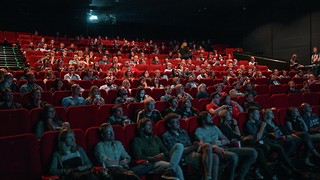Arts Comment: Hollywood Adaptations
If Hollywood wants to adapt films, they should do it warts, burning babies, mute monsters, and all.
Midway through Cormac McCarthy’s The Road, the father and son who travel his apocalyptic America stumble upon the remains of a child, charred above a fire in cannibalistic endeavour. In trauma, the son is rendered mute for much of rest of the book. It is a terrible and disturbing scene which I am still a little haunted by, and it is also a scene entirely omitted from John Hillcoat’s film adaptation.
Perhaps it was an issue of timing. I’m not one of those fantasists who expects every novelistic metaphor to be translated into a long still. I didn’t whine when Jackson forgot about Tom Bombadil, and I don’t devise spells cursing the latest Harry Potter director for that fatal omission from page 488. I have so much faith in the big screen, in fact, that I believe in its power of improvement. After all, if Danny Boyle can make Irvine Welsh seem iconic... but this wasn’t an issue of timing, or artistic adjustment. This was Hillcoat asserting his personal censorship. Quite frankly, he thought that cinema-goers couldn’t handle it.
The Road was never going to be a date movie. No parent was ever going to take little Felix and friends for his 10th birthday bonanza, and publicity prevented any expectations of a yellow-bricked sing-along. The visual art form is no more disturbing than the creation which conspires within the reader’s skull, so why not allow the Odeon audience the full horror of McCarthy’s vision? We live in an age where a dictator’s hanging can be watched by millions online. For £9.99 a month, high speed execution is just a click away – and wireless! The Road is brutal, but it is also thoughtful, and life-affirming, and without its full horrors, its fundamental warning is lost. Namely, hold the hell onto this world, because the alternative doesn’t look so pretty.
If a studio isn’t prepared to unleash a story in its entirety into the cinema, then there seems little point in telling it. But the film adaptation has become something of an obligation for any bestselling novelist: get one review praising a ‘cinematic’ style and Hollywood will be drooling down your collar. Then again, there’s such convenience: with a few glossy posters, publicity is prearranged, front of store in every Waterstone’s in the country. Blag a tagline from the novel – can’t go wrong with a little loyalty. Even an audience is pre-recruited, readers trembling to see their beloved text realised by a different mind. They can bitch about adjustments on the way out. Plot virgins will attend for the names and won’t notice the differences.
And this is where directorial decisions become so puzzling: why should the tastes of the reader and the cinema-goer vary? Hillcoat’s omission is nothing compared to the saccharin eye-bleeder of an ending that Robert Schwentke smeared onto The Time Traveller’s Wife, or the banal personalities and plot with which Spoke Jonze reigned-in the Wild Things of Maurice Sendak’s children’s book. Worldwide, the former has sold nearly five million copies, and the latter 19 million. Both of which suggest that the original plots were pretty appealing. I’m not quite dramatic enough to claim that Hollywood dilution is destroying the novel, just that its new audience is patronised, wrapped in a gentle orchestral arrangement and assumed to enjoy a lighter art form. Give them the bittersweet ending; give them the ambiguities and the cannibalism. They can handle a little haunting.
 News / Tompkins Table 2025: Trinity widens gap on Christ’s19 August 2025
News / Tompkins Table 2025: Trinity widens gap on Christ’s19 August 2025 Comment / A plague on your new-build houses18 August 2025
Comment / A plague on your new-build houses18 August 2025 News / Pro-Palestine activists spray-paint Barclays Eagle Labs18 August 2025
News / Pro-Palestine activists spray-paint Barclays Eagle Labs18 August 2025 News / Pro-Palestine activists urge new Chancellor to ‘condemn Israel’20 August 2025
News / Pro-Palestine activists urge new Chancellor to ‘condemn Israel’20 August 2025 News / Trinity sells O2 Arena lease for £90m12 August 2025
News / Trinity sells O2 Arena lease for £90m12 August 2025









